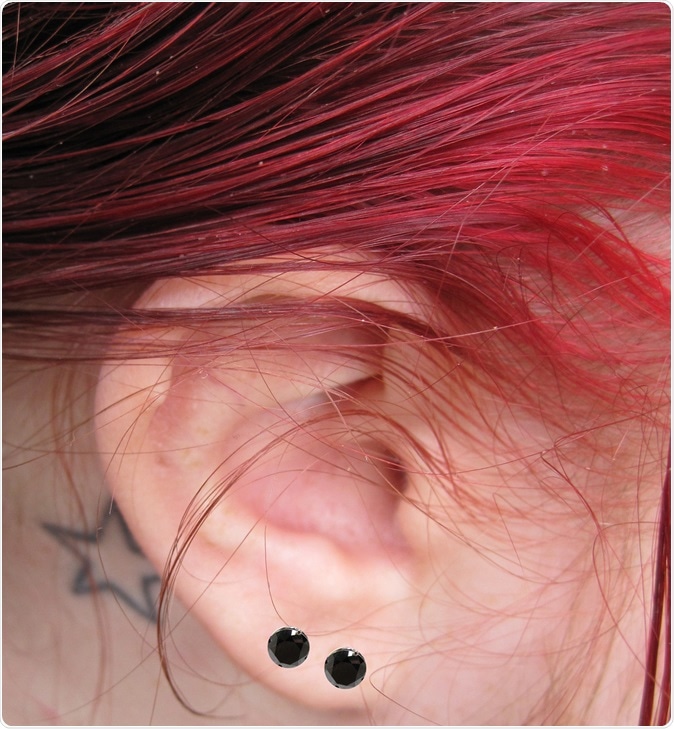
Teen tattoos - an issue raising concern
According to a clinical report by the American Academy of Pediatrics, “voluntary body modifications” or tattoos, scarifications and piercings by teenagers is a rising concern. These can lead to serious complications they warn and also discuss the implications of these modifications both in terms of social as well as personal and related to mental health.
Tattooing and piercings earlier were more common for high risk individuals and populations. With time general populations too have adopted these modifications. According to the American Academy of Pediatrics, these modifications in teenagers may lead to medical complications and also co-exist with other high-risk behaviors. In this report they compare these voluntary body modifications with nonsuicidal self-injury (NSSI).

Image Credit: Peter Baxter / Shutterstock
Data from Harris Poll from 2016 has found that 3 in 10 US adults had at least 1 tattoo. This is a 20 percent rise from 2012. Tattoos are more prevalent in the South (32%) compared to other regions and commoner among adults in their 30’s. Teenage studies are fewer and one such study noted that among high school students from across 8 states, 10 percent had tattoos and over half (55 percent) were interested in getting a tattoo. Among those aged between 12 and 22, 10 to 23 percent had a tattoo and 27 to 42 percent had a body piercing other than earlobes. Older adolescents got tattooed and pierced more often and girls more often than boys got pierced or tattooed.
Regarding knowledge about associated risks studies showed that two thirds of all teenagers knew that getting tattoos or piercings raised their risk of possible infections such as HIV and hepatitis B and C. Knowledge about Hepatitis B and C and tetanus were less common than about HIV. They study report noted that normal body modification are different from non-suicidal self injury (NSSI) which is described in the Diagnostic and Statistical Manual of Mental Disorders, Fifth Edition. NSSI has been termed as impulsive and is associated with mental health problems. Among teenagers the prevalence of NSSI is 14 to 24 percent.
Authors also write about the social implications of adolescent body modifications. They note that with time the public perceptions of only rebels and deviants take up body modifications is on the decline. Societal acceptance of tattoos and piercings has increased they note. Still, these may be detrimental in educational and job opportunities they write.
The report ends with a series of warnings and advice for pediatricians and what they should instruct their patients and their parents. The authors write that all teenagers and their parents should know that these body modifications are often permanent and that removal is difficult and expensive and may not be complete. Complications such as keloids on the scars may be formed. Risk of infections need to be emphasized. The authors also warn that some of the inks or temporary tattoo dyes such as henna may lead to allergic reactions as well. Local and state laws may mandate that body modifications that are permanent may not be offered to adolescents. These need to be kept in mind too. Lastly all teenagers must be adequately counseled that their visible tattoos and modifications may hurt their chances of getting into a good college or getting a good job.























.png)











No hay comentarios:
Publicar un comentario